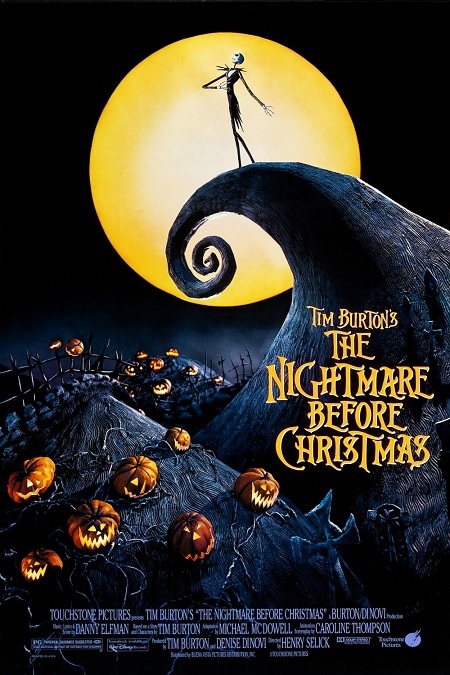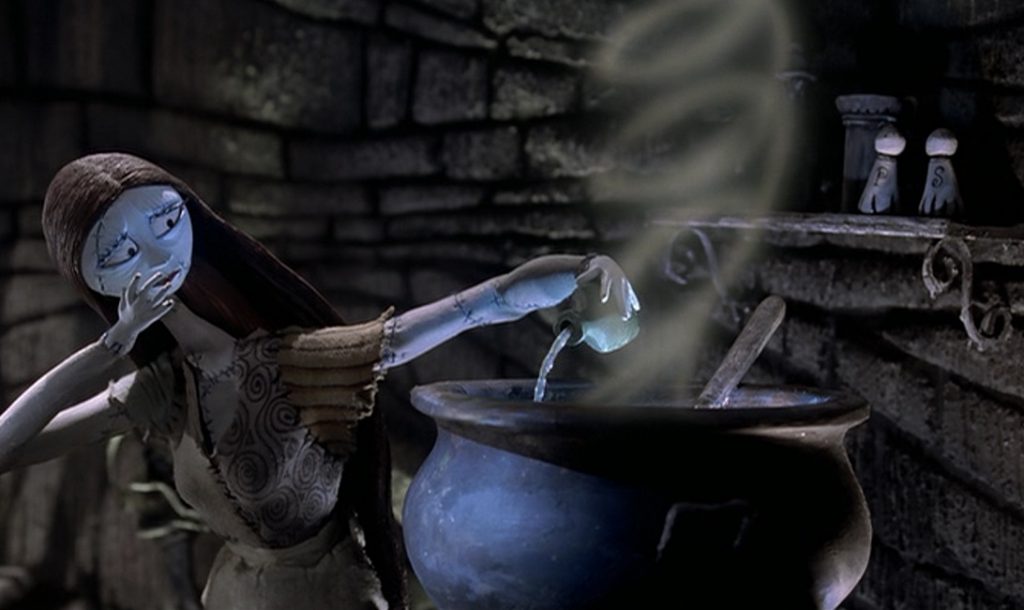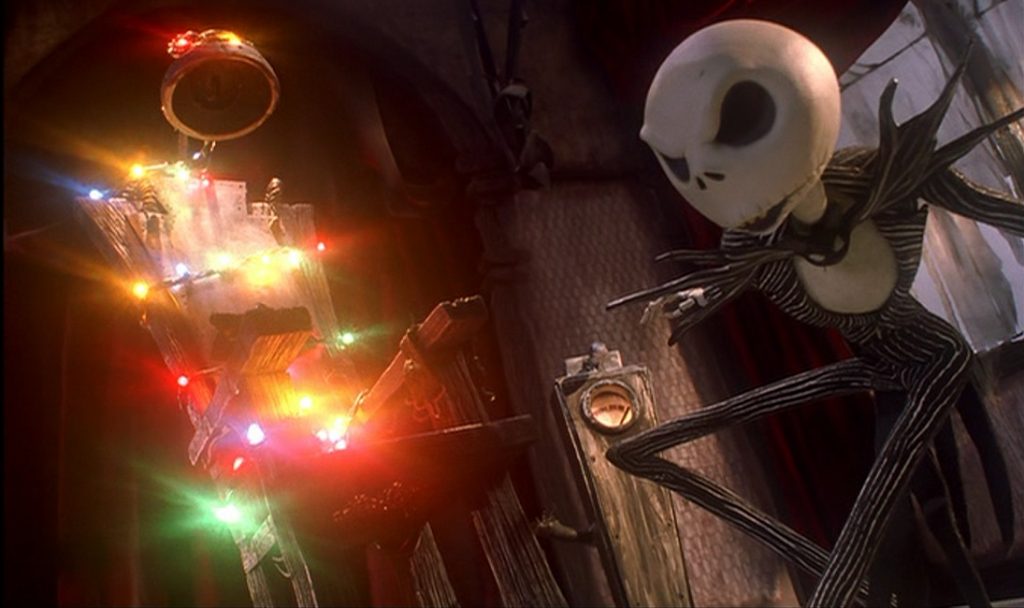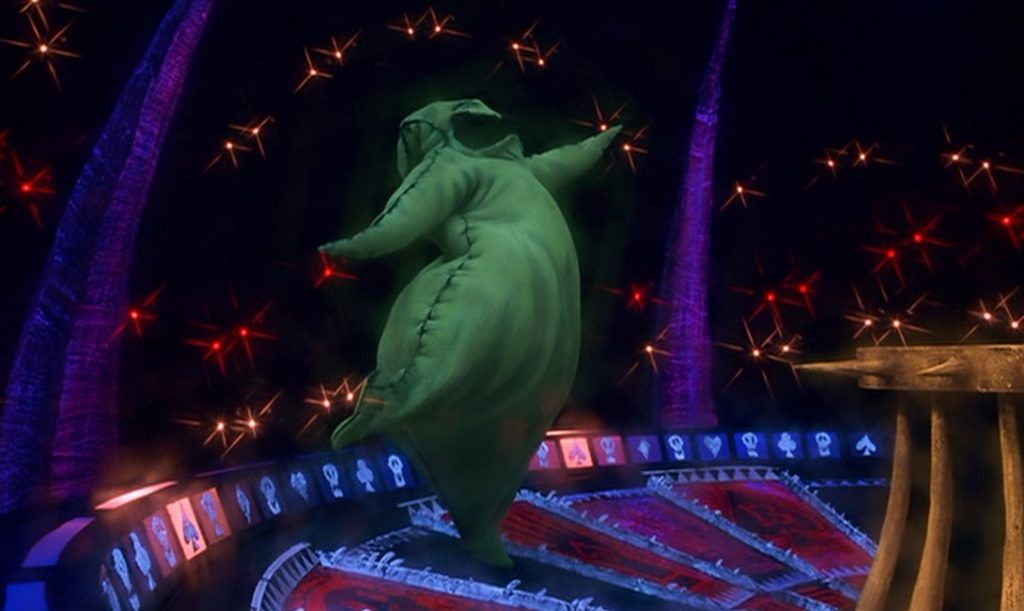



The Nightmare Before Christmas – 1993

This review is going to be a tricky one to write. In this series, I am focusing on the special effects of the films I am watching. But this movie, on the surface, appeared to have only one special effect. The entire hour and sixteen minute film was filmed in stop-motion animation that was so incredibly detailed, and so smoothly crafted, that it is often easy to forget that it is stop-motion at all, but is the stop-motion innovation the entirety of the movie’s special effects?
My research told me that the movie took over three years to film. Why so long, you might ask. Well, consider the meticulous detail that is apparent in the puppets and the environments. It is beyond incredible and yet completely consistent. That takes an incredible amount of time to plan, build, and then finally put onto film. Consider also, that there were 109,440 frames in the film, and each one took a lot of time to set up and shoot. On average, one minute of film took about a week to shoot. The painstaking hours that it took to manipulate the figures for each individual frame of the movie must have been a daunting, if not maddening, task for the animation artists.
Per Wikipedia, “The filmmakers constructed 227 puppets to represent the characters in the movie, with Jack Skellington having ‘around four hundred heads’, allowing the expression of every possible emotion. Sally’s mouth movements were animated through the replacement method. During the animation process, only Sally’s face ‘mask’ was removed in order to preserve the order of her long, red hair. Sally had ten types of faces, each made with a series of eleven expressions (e.g. eyes open and closed, and various facial poses) and synchronized mouth movements.” The replacement method is where only a puppet’s face is removed and replaced with a new one to create each of its facial expressions.
But there were more effects than just the effect of the stop-motion animation, itself. There were fire effects, smoke and fog effects, water effects, and hand drawn animations that were composited into the finished movie. For example, there is a shot where several hand drawn ghosts carried physical Christmas packages in a complex weaving pattern across the screen. The packages were filmed in stop-motion, floating on invisible wires. Then the ghosts were drawn to match the movements of the packages, and composited into the scene. Incidentally, at first glance, you might think that Jack’s dog Zero might have been hand drawn animation, but it becomes clear in the close-up shots that he was also a carefully animated puppet. Brilliant work everyone!
But all that being said, and fully acknowledging the phenomenal scale and complexity of the stop-motion animation, I have to ask… was the movie nominated for Best Special effects based simply on the grand scale of that animation? Or to pare the question down even more, is stop-motion animation really a special effect? I suppose the Academy voters thought it was, so why not?